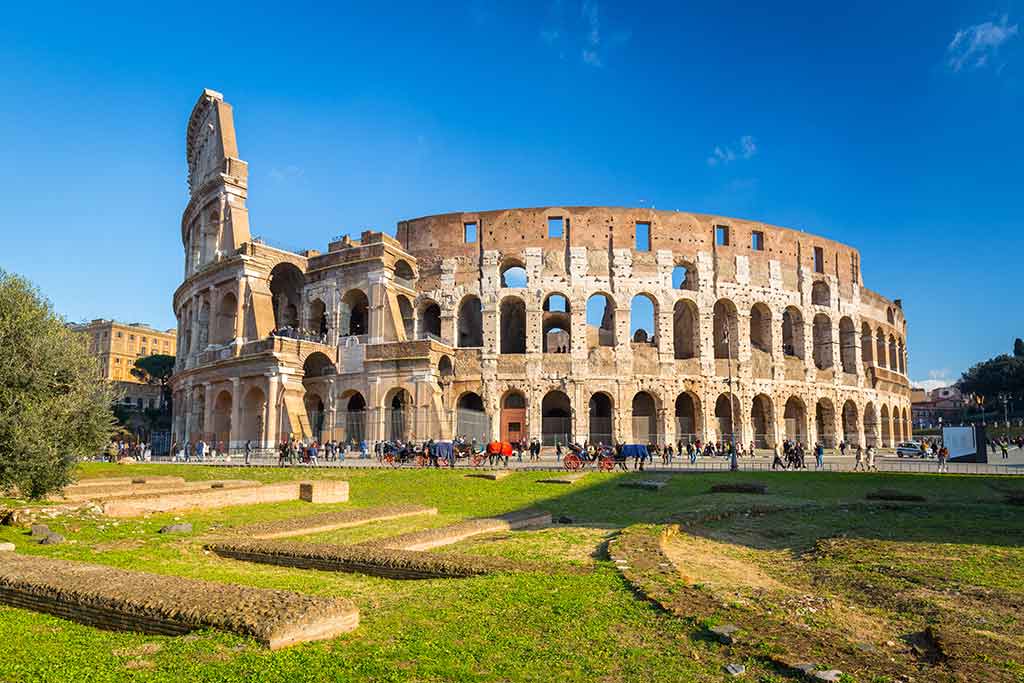
Started by Emperor Vespasian of the Flavia family, it was opened by his son Titus in 80 A.D.
The highly ostentatious opening ceremony, lasted one hundred days during which people saw great fights, shows and hunts involving the killing ofthousands of animals (5000 according to the historian Suetonius).
For the opening, the arena space was filled with water for one of the most fantastic events held in Roman times, naumachias – real sea battles reproducing great battles of the past.
The Coliseum in Rome is one of the most imposing ancient structures. Imagine it all white, completely covered in splendid travertine stone slabs. It is elliptic in shape in order to hold more spectators. It had four floors; the first three had eighty arches each; the arches on the second and third floors were decorated with huge statues.
What we see nowadays is just the skeleton of what was the greatest arena in the ancient world. Three-fifths of the outer surrounding brick wall are missing. In the Middle Ages, when no longer in use, the Colosseum was transformed into an enormous marble, lead and iron quarry used by Popes to build Barberini Palace, Piazza Venezia and even St. Peter's.
The holes still seen in many columns are just the holes made to extract the lead and iron used by the Romans for the nails inside the marble blocks.
The amphitheatre could hold up to seventy thousand spectators.
The tiers of seats were inclined in such a way as to enable people to get a perfect view from wherever they sat. Entry was free for all Roman citizens, but places were divided according to social status, the seats at the top were for the people, the nearer you got to the arena the higher your social status.